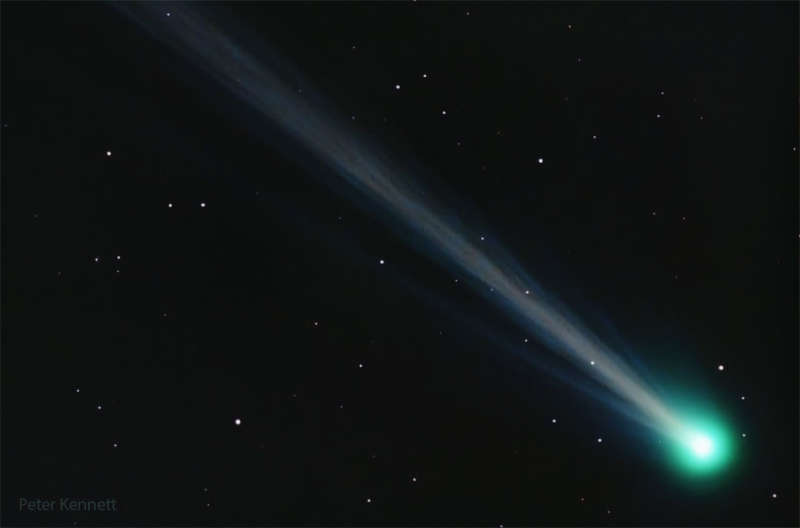Credit & Copyright: Peter Kennett
Explanation:
Comet Nishimura is growing.
More precisely, the tails
C/2023 P1 (Nishimura)
are growing as it nears the Sun.
Discovered only last month, the
comet is already near
naked eye brightness as it now moves inside the Earth's orbit.
The comet will be nearest the
Earth next week, but nearest the Sun the week after -- on September 17.
Speculation holds that expelled ice and dust from
Comet Nishimura's last visit to the inner
Solar System may have created the
Sigma Hydrids
meteor shower which peaks yearly in December.
If so, then this
meteor shower may become more active,
refreshed with new
comet debris.
Pictured, Comet Nishimura was captured from
Edgewood,
New Mexico,
USA
four nights ago, showing a long ion tail structured by interactions with the
Sun's wind.
Look for this
comet near your
eastern horizon just before sunrise for the next few mornings,
but very near your
western horizon just after sunset next week -- as its coma
continues to brighten and its
tails continue to grow.
Gallery:
Selected Comet Nishimura images submitted to APOD
1999 2000 2001 2002 2003 2004 2005 2006 2007 2008 2009 2010 2011 2012 2013 2014 2015 2016 2017 2018 2019 2020 2021 2022 2023 2024 2025 |
Yanvar' Fevral' Mart Aprel' Mai Iyun' Iyul' Avgust Sentyabr' Oktyabr' Noyabr' Dekabr' |
NASA Web Site Statements, Warnings, and Disclaimers
NASA Official: Jay Norris. Specific rights apply.
A service of: LHEA at NASA / GSFC
& Michigan Tech. U.
|
Publikacii s klyuchevymi slovami:
comet - komety
Publikacii so slovami: comet - komety | |
Sm. takzhe:
Vse publikacii na tu zhe temu >> | |
